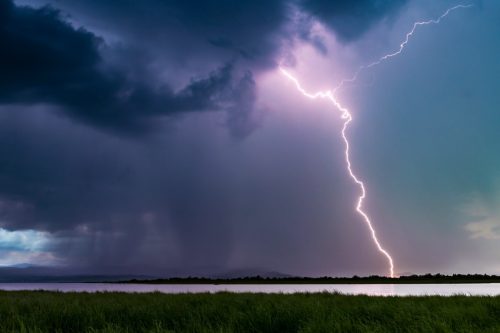Never Get in the Shower If You See This, CDC Warns
Believe it or not, this could have fatal consequences.

Most people in the U.S. take a shower every day—and we're thankful for that. But whether you're someone who needs a shower to wake up in the morning or you like to get clean before bed, you should always keep an eye out for one thing. The Centers for Disease Control and Prevention (CDC) is warning Americans to never get in the shower under certain conditions—so make sure you know what to look for. Read on to find out when you should hold off on getting under the shower head.
READ THIS NEXT: Never Start a Shower If You Haven't Done This First, CDC Says.
Most bathroom injuries occur near or in the shower.

Showering can help keep us safe like all good hygiene practices, but it can be surprisingly dangerous in other ways. In 2008, the CDC released a report on nonfatal bathroom injuries and emergencies among those 15 years and older. According to the report, the most common place people injured themselves in the bathroom was in or around the shower.
"For all ages, the most hazardous activities were bathing, showering, or getting out of the tub or shower," the CDC wrote. "Approximately two-thirds of all injuries occurred in the tub or shower, and approximately half were precipitated by bathing or showering, slipping, or getting out of the tub or shower."
As it turns out, slipping in the shower is certainly not the only danger you need to be worried about.
The CDC says you should never get in the shower if you see this.

At one time or another, we've all likely been warned not to shower during a storm. But if you've chalked this up to be nothing but an old wives' tale, you might want to rethink that.
The CDC warns Americans that it is in fact not safe to take a shower or bath during a thunderstorm because of lightning. Note that thunder is caused by lightning, so "thunderstorms always have lightning … but you can also have lightning without a thunderstorm," per the National Severe Storms Laboratory (NOAA). With that in mind, if you hear thunder or see lightning, "stay out of the shower," the CDC says.
For more life advice delivered straight to your inbox, sign up for our daily newsletter.
You can get electrocuted by lightning while showering.

But why is showering during a storm a safety risk? According to the CDC, it all boils down to the fact that lightning can reach you indoors. "Lightning can travel through plumbing," the agency explains, noting that it's not only the shower you need to be concerned about. "It is best to avoid all water during a thunderstorm. Do not shower, bathe, wash dishes, or wash your hands," the CDC adds.
Most plumbing systems utilize metal pipes, which can "serve as a conduit for electrical current," Jeffrey A. Andresen, PhD, professor of geography, environment, and spatial sciences at Michigan State University, explained to Health. If lightning strikes a water pipe or even nearby, the electricity can be drawn through the pipe and potentially electrocute you if you are showering (or otherwise using water).
The CDC doesn't advise trying your luck even if you don't have metal pipes for your plumbing. "The risk of lightning travelling through plumbing might be less with plastic pipes than with metal pipes," the agency acknowledges. "However, it is best to avoid any contact with plumbing and running water during a lightning storm to reduce your risk of being struck."
Getting struck by lightning can be fatal.

If you've ever taken a shower during a storm even if warned not to, you might write this off as a risk you can afford to keep taking. But lightning isn't something you should mess with. The National Weather Service estimates that lightning strikes about 300 people in the U.S. each year, and the CDC says that around 10 percent of all people struck die as a result.
Lightning-based deaths "most commonly [occur] because of a heart attack," the agency explains. "Other lightning injuries include blunt trauma, neurological syndromes that are usually temporary, muscle injuries, eye injuries ('lightning-induced cataract'), skin lesions, and burns."
Your home and other enclosed buildings are considered "safe shelter" during a storm, but it's not impossible to get struck by lightning while you're inside. The CDC says about "one-third of lightning-strike injuries occur indoors," and certain activities can increase that risk—like taking a shower.





















